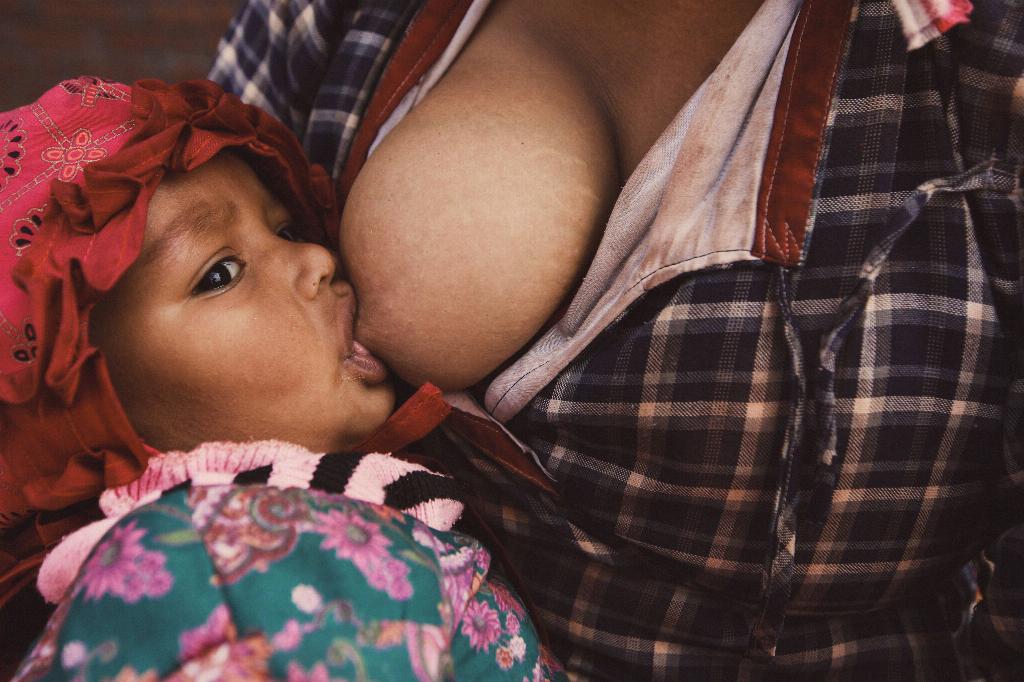When a lactating parent observes that one breast is larger than the other while breastfeeding, it can raise concerns and questions about the nature of this asymmetry. It is crucial to understand that breast size asymmetry is a common occurrence during lactation. This phenomenon is often temporary and typically resolves on its own after the weaning process.
Addressing Concerns About Breast Size Discrepancy
If you find that one breast is noticeably larger than the other while breastfeeding, it’s essential to recognize that this is a natural part of the lactation process. Asymmetry in breast size can be attributed to variations in milk production, breast tissue composition, and hormonal fluctuations. It does not necessarily indicate an underlying health issue.
Encouraging Balanced Breastfeeding
While breast size asymmetry is common and usually harmless, there are steps you can take to promote more balanced breastfeeding. Start each nursing session on the smaller breast to ensure both breasts are adequately stimulated for milk production. Switching sides frequently can also help distribute milk production more evenly between the breasts.
Seeking Support and Guidance
If you have concerns about significant breast size difference or if you experience discomfort or difficulty while breastfeeding, it’s advisable to seek support from a lactation consultant or healthcare provider. They can offer guidance, reassurance, and practical tips to address any challenges you may be facing.
Utilizing Breast Compression Techniques
Implementing breast compression techniques during breastfeeding can help encourage milk flow from the smaller breast, promoting more balanced milk production. Gentle manual compression or breast massage while nursing can aid in emptying the breast effectively and stimulating further milk production.
Embracing Individual Breast Characteristics
It’s essential to embrace and accept the individual characteristics of each breast during breastfeeding. Remember that slight differences in size, shape, and milk production are normal and should not cause undue worry. Focus on nurturing your baby and meeting their nutritional needs rather than fixating on breast symmetry.
Understanding the Post-Weaning Transition
As you progress through the weaning process, you may notice changes in breast size and symmetry. While some individuals find that their breasts return to a more balanced state after weaning, others may continue to experience minor differences. These variations are usually part of the natural postpartum transition.
Monitoring Breast Health
While asymmetry in breast size is often benign and temporary, it’s crucial to monitor your breast health and be attentive to any changes or abnormalities. Conduct regular self-breast exams to check for lumps, pain, or other signs that may warrant further evaluation by a healthcare provider.
Ensuring Proper Breast Support
Investing in well-fitted, supportive nursing bras can help alleviate discomfort and provide adequate support for both breasts during breastfeeding. Properly fitted bras can promote optimal breast health, reduce strain on breast tissue, and enhance overall comfort while nursing.
Emphasizing Self-Care and Well-Being
Amidst the fluctuations and challenges of breastfeeding, it’s essential to prioritize self-care and well-being. Ensure you are nourishing your body with a balanced diet, staying hydrated, getting ample rest, and seeking emotional support when needed. Taking care of yourself is crucial for maintaining overall health and resilience during the breastfeeding journey.
Celebrating Your Breastfeeding Experience
Remember that breastfeeding is a unique and personal journey, and each individual’s experience is valid and meaningful. Embrace the ups and downs, challenges and joys that come with breastfeeding, including the nuances of breast size asymmetry. Celebrate your efforts in nourishing your baby and the bond you are fostering through breastfeeding.
Conclusion
In conclusion, if you find that one breast is larger than the other during breastfeeding, rest assured that this is a common occurrence with various contributing factors. By understanding the nature of breast asymmetry, seeking support when needed, implementing balanced breastfeeding practices, and prioritizing self-care, you can navigate this aspect of the breastfeeding journey with confidence and grace.

